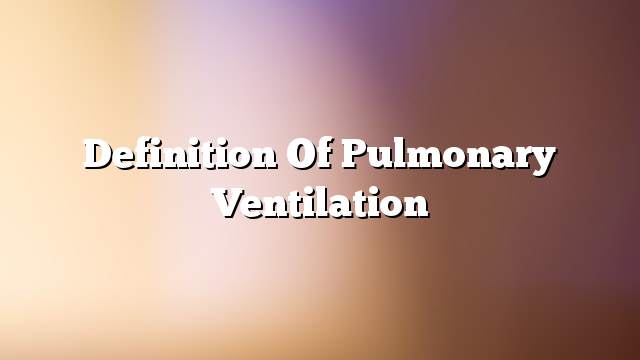The living organisms need to breathe in order to survive. We and all organisms need oxygen gas to carry out our vital functions, and the interruption of the supply of this gas to the body causes the death of this body and the death of this organism. The respiration involves two processes, Inhale and Exhale, where oxygen is inhaled from the atmosphere by the body and the release of carbon dioxide from the body into the atmosphere. So inhalation simply means taking oxygen from the air, and exhaling means releasing carbon dioxide into the atmosphere. These operations are performed by the lungs (Lungs) in the body.
Pulmonary Ventilation means the exchange of gases between the lungs and the air through the inhalation and exhalation processes. The rate of pulmonary ventilation is measured in liters per minute. During the process of inhalation expands the thoracic cavity accompanied by an increase in the size of the lungs and expansion, and this leads to a decrease in pressure in the lungs and thus attracted air into the lungs. In the exhalation process, the muscles that lift the ribs relax along with the diaphragm, leading to a reduction of the rib cage and thus pressure on the lungs, which makes the air go out of the body.
Thus, the process of pulmonary ventilation is very important to the life of living organisms, without which creatures can not breathe and therefore can not live. Breathing involves a range of other operations along with pulmonary ventilation. The breathing process is organized by the brain if it contains breathing centers, one of which is responsible for the process of inhalation, and the center is responsible for exhaling. These centers are also affected by the level and concentration of oxygen, carbon dioxide and pH in the blood, where there are chemical receptors that are affected and alert the respiratory centers in the brain. There are several other factors that affect the breathing process, including the psychological state such as sadness, tension, joy and others, and there is also voluntary control of breathing and others.
